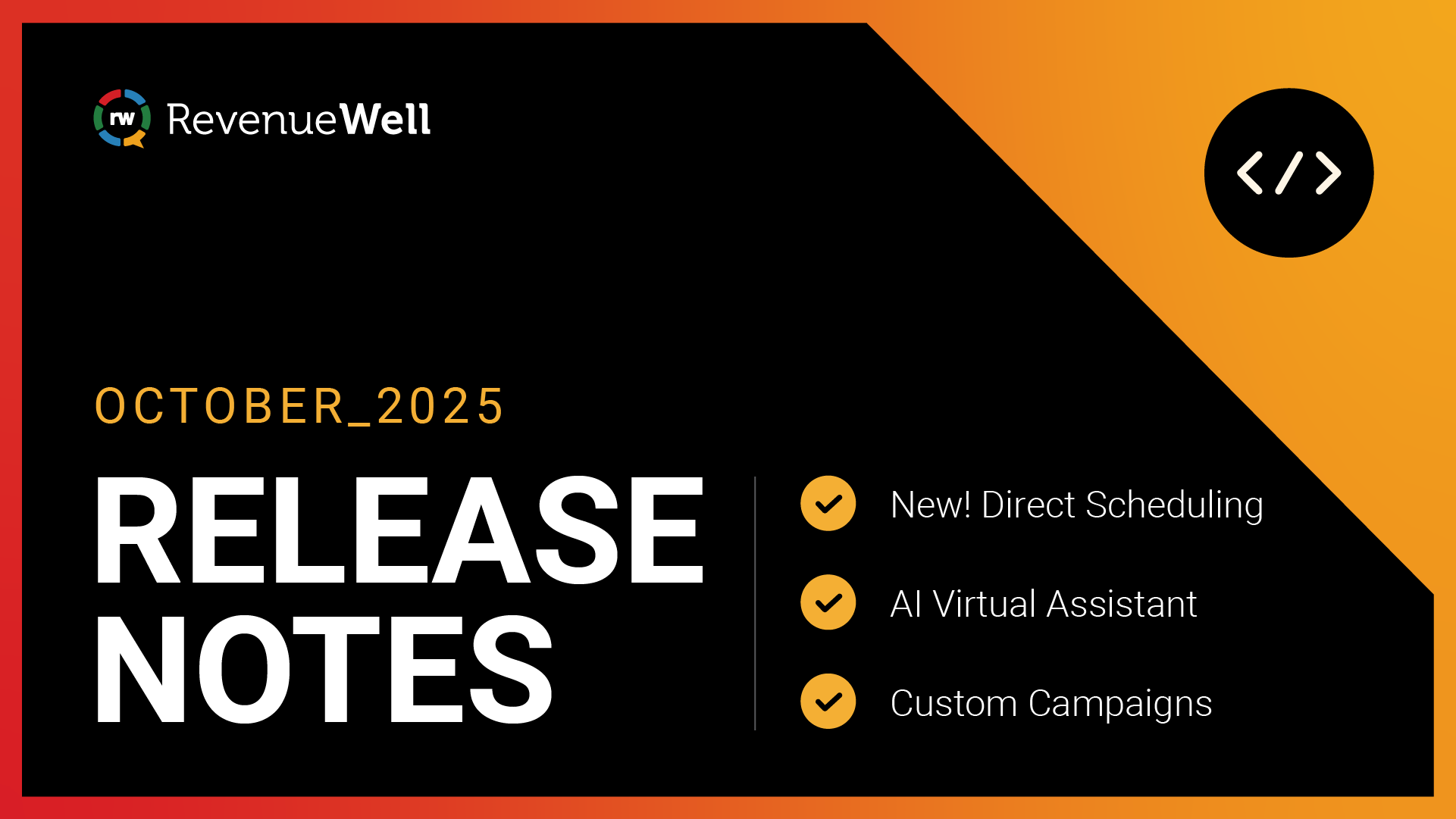Texting Dental Patients: 11 Stats to Know

Texting is the most efficient way to engage with patients. Here are 11 facts that show how crucial texting dental patients is to any thriving practice.
Texting is the fastest and easiest way to reach patients.
Take a look around your waiting room. Are most folks looking at their phones? That’s where they communicate, consume, pass the time, and run their schedules.
Texting is not only convenient, but expected from today’s generation, who regularly receive important texts from other businesses and healthcare providers.
If you’re still unsure if texting is the way to go for your practice, these 11 statistics may change your mind.
Accessibility
89% of people always have their smartphone easily accessible.
Quick poll – How far away is your smartphone? On your desk, a few inches away? Behind you, in your coat pocket? Or are you on it right now?
That’s the beauty of smartphones – they’re always within reach. And that means, with texting, you can get in touch with patients easily, no matter where they are.
With 89% of your patients always having their phone on them, imagine the response rates you’ll get when you text them about their upcoming appointment.
Or when you message them about a last-minute opening.
No more being sent straight to voicemails.
No more hearing, “Can I call you right back?”
Just, “Yes, I’ll be there,” and, “Sure, I’ll take that appointment!”
Most Popular Method of Communication
Texting is the No. 1 most used form of communication among Americans younger than 50.When you want to get in touch with your kids, grandkids, nieces, nephews, or anyone else in the younger generation, do you text them or call them?
If you want them to actually respond – chances are, you’ve found out they’ll respond to a text over a call any day.
Take a look at the average age of your patient base.
If it’s under 50, then meet them where they’re at. Texting is, by far, your best bet for getting higher response rates.

More Texts than Calls
American smartphone users send and receive five times more texts than they make and receive phone calls.
Your patients are busy (isn’t everyone these days?). Reading a quick text and responding appropriately takes maybe 30 seconds.
A phone call? That can take at least a couple minutes of greetings, small talk, getting to the reason for the call, then finally saying goodbye.
Plus, you have to be in the right place with minimal noise in the background, and the right time in the day to take the call.
No wonder people are sending more texts than making phone calls! It’s just easier.
Texting Patients Means Instant Communication
82% of text messages are read within five minutes. Meanwhile, consumers only open 25% of the emails they receive.
Most folks are inundated with emails – the majority of them impersonal and marketing-related.
Text messages, on the other hand, are reserved for friends, coworkers, or reminders about their appointments (i.e. with you!).In other words, texts are reserved for the important stuff.
Another reason people respond quickly to text messages: they contain less content.
The simpler the content, the easier to digest and respond to.
Harness the power of that five-minute response time!

Positive Perception
77% of consumers who can text and are aged 18–34 view businesses that text in a favorable light.
This is the generation that will find you on Google.
They'll book an appointment if (and only if) your website is up-to-date.
And if your online reviews are stellar, you have a great shot at pulling in more new patients.
Nowadays, if you aren’t hip with the latest technology, patients will move on.
Why?
They might assume that if your website is stuck in the past, your dental technology is too.
When you choose to communicate with patients via text, you’re choosing to market to this generation who prefer to be communicated with that way.
Easy Opt-Ins
86% of US consumers opt in to receive SMS notifications.
This statistic refers to consumers opting in to text messages sent by their favorite businesses. And it’s 86% of all consumers, not just those who fall in a younger age bracket.
That’s huge!
If you’ve been afraid to embrace texting patients because it feels too invasive, this statistic alone should allay any fears.
Most patients are not only okay with receiving text messages from businesses, they are used to it (and usually prefer it).

Nearly All Text Messages are Read
The open rate for text messages in the United States is 82%.Which one are you more likely to let languish in “unread” status – emails or texts?
Are you one of those people with 11,000 unread emails in your inbox?
The majority of people open every text message they receive.
It’s not only exciting to receive a text, it’s annoying to continually see a notification that you have unread texts.
Compare this 82% open rate to that of emails – 25%.
If you want your patients to read the messages you send, your best bet is to connect through text.
Fastest Way to Communicate
When it comes to important service updates and purchases, 78% of US consumers say receiving a text message is the fastest way to reach them.
Are your unconfirmed appointments keeping you up at night?
What percentage of the voicemails you leave patients turn into a call back?
It’s easy to see why texting gets you a faster response.
Most patients have their phone on them throughout the day, and texting takes up only a couple seconds of their time.
Listening to a voicemail and making the time to return a call puts a little more pressure on your patient to find just the right time to do so.
We know getting those confirmations in is paramount to keeping your schedule running smoothly.
It follows that asking for confirmations via text message is the best way to run a tight ship.

The Most Important Feature
80% of US consumers said that providing basic information is the most important feature of service-based messaging to increase satisfaction.
These types of messages are the ones that say simple things like, “Your payment has been applied, thanks!” or, “You driver is on their way,” or “Your prescription is ready for pickup.
”Your patients are busy people with a lot going on. Receiving quick texts with information that can help them tackle their to-do lists is the key to keeping them happy.
Imagine sending your patient a quick reminder that they’re due for an appointment with, “We have an opening for next Wednesday, can you make it?”
They’ll quickly check their calendar, respond back, and get on with their day. That’s a win for them and for you.
Text Messages Are Extremely Useful
91% of users who opted in to receive texts from a brand see those messages as “somewhat” or “very useful.”
True – there will be a few patients who are adamantly against receiving text messages from you, and they’ll sure let you know it.
But for those who opt in to receive text messages from important businesses, they (91% of them) view the messages they receive as useful.
And if they don’t, then they can opt out at any time (by replying “STOP”).
When you text message patients, you improve the efficiency of your communication, keep your schedule full, and boost production.

Perfect for Appointment Reminders
In the United States, 69% of consumers appreciate getting texts or emails from healthcare providers.
Respondents noted that texts are particularly useful for appointment reminders and to give guidelines for upcoming tests.
If you need any more reason to get on the texting bandwagon – this is it.
Sixty-nine percent of consumers want you to communicate with them via text.
There is already a precedent for other healthcare providers to send appointment reminder text messages, so why not join them in helping keep your patients healthy?
Some patients are so used to receiving text message appointment reminders that if they don’t get one from their dental office, they may think their calendar must be wrong. Or worse, that you cancelled their appointment.
It’s better to stay one step ahead and use text messages to remind them you’re looking forward to seeing them.
When you use text messages to reach patients, you’re using the easiest method of actually getting them to engage with your practice.
That means fewer frustrating gaps in your schedule and a little more time for in-person interaction with patients as they enter your doors.
Making them feel welcome and like family is the key to seeing them for years to come!

Learn more about how RevenueWell improves case acceptance and creates more close-knit relationships between dentists and their patients.




